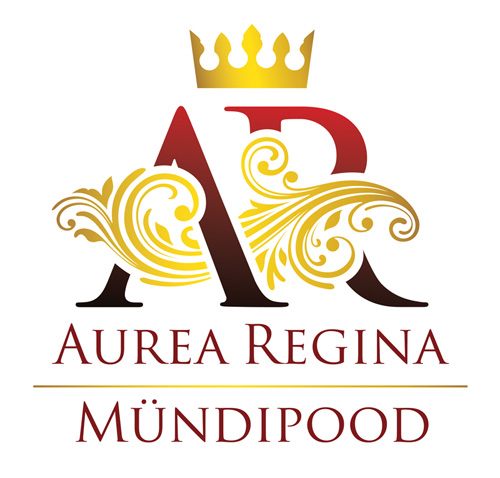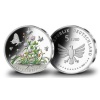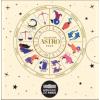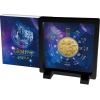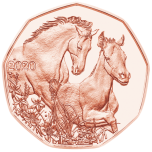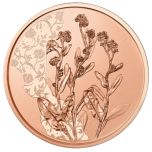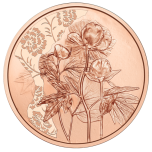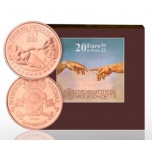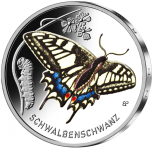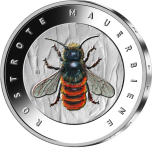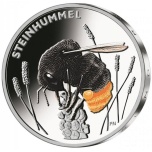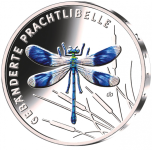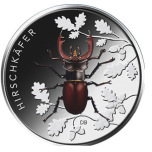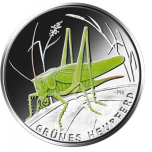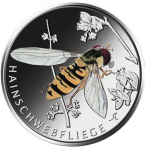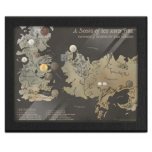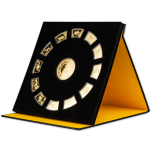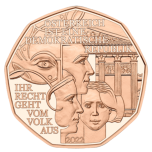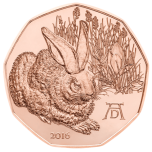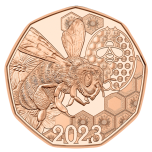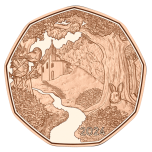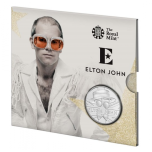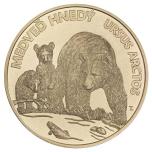Base metal coins
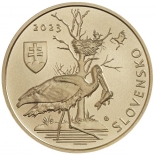

Subcategories
Quality: Special Uncirculated
Face Value: 5 Euro
Diameter: 28,5 mm
Copper: 99,9%
Total Weight: 8,5 g
Comes without packaging
Few animals have had a bigger impact on humans than the horse. Its power, beauty and sensitivity make the horse one of the most beloved members of the animal kingdom, not least among young female riders, many of whom form a profound and enduring bond with their loyal steed. The Easter Coin 2020 celebrates this unique bond.
From being the subject of countless prehistoric cave paintings, to the leading form of human transport for more than five millennia, the horse has played an unparalleled role in the development of society. The most iconic of all European horse breeds is the Lipizzaner, made world famous through its connection with the Spanish Riding School in Vienna. Originally from Slovenia, the Lipizzaner has been bred since 1920 at the stud farm at Piber in the Austrian province of Styria, where some 40 foals come into the world every year. Within minutes of their birth, new born foals can stand and, though initially unsteady, are soon galloping joyfully across the alpine meadows.
The coin features a foal in the foreground frolicking happily through a meadow while its mother keeps a watchful eye close behind. The lower part of the coin is decorated with an assortment of spring flowers.
Face Value: 5 Euro
Diameter: 28,5 mm
Copper: 99,9%
Total Weight: 8,5 g
Comes without packaging
Few animals have had a bigger impact on humans than the horse. Its power, beauty and sensitivity make the horse one of the most beloved members of the animal kingdom, not least among young female riders, many of whom form a profound and enduring bond with their loyal steed. The Easter Coin 2020 celebrates this unique bond.
From being the subject of countless prehistoric cave paintings, to the leading form of human transport for more than five millennia, the horse has played an unparalleled role in the development of society. The most iconic of all European horse breeds is the Lipizzaner, made world famous through its connection with the Spanish Riding School in Vienna. Originally from Slovenia, the Lipizzaner has been bred since 1920 at the stud farm at Piber in the Austrian province of Styria, where some 40 foals come into the world every year. Within minutes of their birth, new born foals can stand and, though initially unsteady, are soon galloping joyfully across the alpine meadows.
The coin features a foal in the foreground frolicking happily through a meadow while its mother keeps a watchful eye close behind. The lower part of the coin is decorated with an assortment of spring flowers.
15,00 €
Quality: Uncirculated
Face Value: 10 Euro
Diameter: 32 mm
Material: Copper
Total Weight: 15 g
Mintage: 130 000
Without capsule
As its name implies, the forget-me-not signifies ‘remember me’ in the language of flowers. But alongside other literal meanings of its common name, the forget-me-not is also a symbol of profound love, remembrance, fidelity and constancy. Giving the flowers at the start of an illicit love affair could be a discreet way to convey a need for trust and confidentiality. Although passionate and romantic love are important elements of their meaning, forget-me-nots can signify deep friendship and familial love as well. In addition, forget-me-nots can be used to convey that the bonds of true love transcend time and space and will continue to exist despite physical separation and even death. Each spring forget-me-nots create a delightful froth of intense blue flowers are a particularly welcome sight when not much else is in bloom. Unlike many other symbolic meanings associated with flowers, those of the forget-me-not have endured – rather like the timeless love and constancy they convey.
Face Value: 10 Euro
Diameter: 32 mm
Material: Copper
Total Weight: 15 g
Mintage: 130 000
Without capsule
As its name implies, the forget-me-not signifies ‘remember me’ in the language of flowers. But alongside other literal meanings of its common name, the forget-me-not is also a symbol of profound love, remembrance, fidelity and constancy. Giving the flowers at the start of an illicit love affair could be a discreet way to convey a need for trust and confidentiality. Although passionate and romantic love are important elements of their meaning, forget-me-nots can signify deep friendship and familial love as well. In addition, forget-me-nots can be used to convey that the bonds of true love transcend time and space and will continue to exist despite physical separation and even death. Each spring forget-me-nots create a delightful froth of intense blue flowers are a particularly welcome sight when not much else is in bloom. Unlike many other symbolic meanings associated with flowers, those of the forget-me-not have endured – rather like the timeless love and constancy they convey.
25,00 €
Quality: Uncirculated
Face Value: 10 Euro
Diameter: 32 mm
Material: Copper
Total Weight: 15 g
Mintage: 130 000
Without capsule
In England the peony is sometimes referred to as the ‘rose royale’ and the Chinese word for peony means ‘the most beautiful’. Peonies have been painted by many European artists and the opulent beauty of the peony has long been a popular subject in Chinese and Japanese literature, painting and decoration. A Chinese legend has it that a capricious empress commanded all the flowers in her garden to blossom at the same time. All acquiesced apart from the peony. Annoyed by the flower’s refusal, the empress banished it to the coldest reaches of the empire, yet despite the inhospitable environment, the peony thrived. The empress, duly impressed, allowed the peony to return, declaring it the ‘queen of all flowers’.
Face Value: 10 Euro
Diameter: 32 mm
Material: Copper
Total Weight: 15 g
Mintage: 130 000
Without capsule
In England the peony is sometimes referred to as the ‘rose royale’ and the Chinese word for peony means ‘the most beautiful’. Peonies have been painted by many European artists and the opulent beauty of the peony has long been a popular subject in Chinese and Japanese literature, painting and decoration. A Chinese legend has it that a capricious empress commanded all the flowers in her garden to blossom at the same time. All acquiesced apart from the peony. Annoyed by the flower’s refusal, the empress banished it to the coldest reaches of the empire, yet despite the inhospitable environment, the peony thrived. The empress, duly impressed, allowed the peony to return, declaring it the ‘queen of all flowers’.
25,00 €
Country: Vatican City
Mintage year: 2023
Face value: 20 euro
Diameter: 32.00 mm
Weight: 15.00 g
Alloy: Copper
Quality: BU
Mintage: 26 500 pcs
The Vatican State Mint continues its “Art and Faith” series by dedicating the 20 euro copper coin to Michelangelo’s Creation of Adam. Artist Antonella Napolione reproduces on the coin’s reverse side one of the world’s most celebrated and renowned paintings: The Creation of Adam. This fresco was painted by Michelangelo Buonarroti around 1511 and is part of the vault of the Sistine Chapel. Adam, lying on the ground, turns his gaze toward the Creator by extending his left hand toward Him. God, suspended in a cloud, extends His right hand towards Adam in the act of giving him life.
Mintage year: 2023
Face value: 20 euro
Diameter: 32.00 mm
Weight: 15.00 g
Alloy: Copper
Quality: BU
Mintage: 26 500 pcs
The Vatican State Mint continues its “Art and Faith” series by dedicating the 20 euro copper coin to Michelangelo’s Creation of Adam. Artist Antonella Napolione reproduces on the coin’s reverse side one of the world’s most celebrated and renowned paintings: The Creation of Adam. This fresco was painted by Michelangelo Buonarroti around 1511 and is part of the vault of the Sistine Chapel. Adam, lying on the ground, turns his gaze toward the Creator by extending his left hand toward Him. God, suspended in a cloud, extends His right hand towards Adam in the act of giving him life.
69,00 €
Materiall: CuNi
Weight: 9g
Diameter: 26,9 mm
Mintage: 100 000
It is the third coin issued as part of the “Wonderful world of insects” series, which will see a total of nine coins with partially coloured motifs issued over the period 2022-24. The series is intended to bring into focus – especially in light of current developments (insect extinction) – a special group of animals that make up a significant part of our natural heritage.
The €5 collectors’ coin “Swallowtail” is made of a cupronickel alloy. It weighs 9.68 g, measures 27.25 mm in diameter and will be available both in mint condition and with a proof-like finish. The mint condition coins will be brought into circulation at their face value (€5). The collector quality coins with a proof-like finish will be higher than their face value and will be issued by the Münze Deutschland (Germany’s official sales agency for collector coins).
The coin was designed by Bastian Prillwitz, an artist based in Berlin (picture side), and Andre Witting, a Berlin-based artist (reverse).
The reverse, which will be used for all coins in the series, features an eagle, the words “BUNDESREPUBLIK DEUTSCHLAND”, the value and denomination, the year 2023, the twelve stars of Europe and the letter “G” for the State Mint of Karlsruhe.
Its smooth edge is engraved with the inscription: “WUNDERWELT INSEKTEN” (WONDERFUL WORLD OF INSECTS).
Weight: 9g
Diameter: 26,9 mm
Mintage: 100 000
It is the third coin issued as part of the “Wonderful world of insects” series, which will see a total of nine coins with partially coloured motifs issued over the period 2022-24. The series is intended to bring into focus – especially in light of current developments (insect extinction) – a special group of animals that make up a significant part of our natural heritage.
The €5 collectors’ coin “Swallowtail” is made of a cupronickel alloy. It weighs 9.68 g, measures 27.25 mm in diameter and will be available both in mint condition and with a proof-like finish. The mint condition coins will be brought into circulation at their face value (€5). The collector quality coins with a proof-like finish will be higher than their face value and will be issued by the Münze Deutschland (Germany’s official sales agency for collector coins).
The coin was designed by Bastian Prillwitz, an artist based in Berlin (picture side), and Andre Witting, a Berlin-based artist (reverse).
The reverse, which will be used for all coins in the series, features an eagle, the words “BUNDESREPUBLIK DEUTSCHLAND”, the value and denomination, the year 2023, the twelve stars of Europe and the letter “G” for the State Mint of Karlsruhe.
Its smooth edge is engraved with the inscription: “WUNDERWELT INSEKTEN” (WONDERFUL WORLD OF INSECTS).
14,90 €
Materiall: CuNi
Weight: 9g
Diameter: 26,9 mm
Mintage: 100 000
The German government has decided to mint a €5 collectors’ coin entitled “Red mason bee”, to be issed at 7 September 2023. It is the fourth coin issued as part of the “Wonderful world of insects” series, which will see a total of nine coins with partially coloured motifs issued over the period 2022-24. The series is intended to bring into focus – especially in light of current developments (insect extinction) – a special group of animals that make up a significant part of our natural heritage.
The €5 collectors’ coin “Red mason bee” is made of a cupronickel alloy. It weighs 9.68 g, measures 27.25 mm in diameter and will be available both in mint condition and with a proof-like finish. The mint condition coins will be brought into circulation at their face value (€5). The collector quality coins with a proof-like finish will be higher than their face value and will be issued by the Münze Deutschland (Germany’s official sales agency for collector coins).
The coin was designed by Claudius Riedmiller, an artist based in Stuttgart (picture side), and Andre Witting, a Berlin-based artist (reverse).
The reverse, which will be used for all coins in the series, features an eagle, the words “BUNDESREPUBLIK DEUTSCHLAND”, the value and denomination, the year 2023, the twelve stars of Europe and the letter “D” for the State Mint of Munich.
Its smooth edge is engraved with the inscription: “WUNDERWELT INSEKTEN” (WONDERFUL WORLD OF INSECTS)
Weight: 9g
Diameter: 26,9 mm
Mintage: 100 000
The German government has decided to mint a €5 collectors’ coin entitled “Red mason bee”, to be issed at 7 September 2023. It is the fourth coin issued as part of the “Wonderful world of insects” series, which will see a total of nine coins with partially coloured motifs issued over the period 2022-24. The series is intended to bring into focus – especially in light of current developments (insect extinction) – a special group of animals that make up a significant part of our natural heritage.
The €5 collectors’ coin “Red mason bee” is made of a cupronickel alloy. It weighs 9.68 g, measures 27.25 mm in diameter and will be available both in mint condition and with a proof-like finish. The mint condition coins will be brought into circulation at their face value (€5). The collector quality coins with a proof-like finish will be higher than their face value and will be issued by the Münze Deutschland (Germany’s official sales agency for collector coins).
The coin was designed by Claudius Riedmiller, an artist based in Stuttgart (picture side), and Andre Witting, a Berlin-based artist (reverse).
The reverse, which will be used for all coins in the series, features an eagle, the words “BUNDESREPUBLIK DEUTSCHLAND”, the value and denomination, the year 2023, the twelve stars of Europe and the letter “D” for the State Mint of Munich.
Its smooth edge is engraved with the inscription: “WUNDERWELT INSEKTEN” (WONDERFUL WORLD OF INSECTS)
14,90 €
Materiall: CuNi
Weight: 9g
Diameter: 26,9 mm
Mintage: 100 000
The German government has decided to mint a €5 collectors’ coin entitled “Red mason bee”, to be issed at 7 September 2023. It is the fourth coin issued as part of the “Wonderful world of insects” series, which will see a total of nine coins with partially coloured motifs issued over the period 2022-24. The series is intended to bring into focus – especially in light of current developments (insect extinction) – a special group of animals that make up a significant part of our natural heritage.
The €5 collectors’ coin “Red-tailed bumblebee” is made of a cupronickel alloy. It weighs 9.68 g, measures 27.25 mm in diameter and will be available both in mint condition and with a proof-like finish. The mint condition coins will be brought into circulation at their face value (€5). The collector quality coins with a proof-like finish will be higher than their face value and will be issued by the Münze Deutschland (Germany’s official sales agency for collector coins).
The coin was designed by Patrick Niesel, an artist based in Röthenbach an der Pegnitz (picture side), and Andre Witting, a Berlin-based artist (reverse).
The reverse, which will be used for all coins in the series, features an eagle, the words “BUNDESREPUBLIK DEUTSCHLAND”, the value and denomination, the year 2024, the twelve stars of Europe and the letter “J” for the State Mint of Hamburg.
Its smooth edge is engraved with the inscription: “WUNDERWELT INSEKTEN” (WONDERFUL WORLD OF INSECTS).
Weight: 9g
Diameter: 26,9 mm
Mintage: 100 000
The German government has decided to mint a €5 collectors’ coin entitled “Red mason bee”, to be issed at 7 September 2023. It is the fourth coin issued as part of the “Wonderful world of insects” series, which will see a total of nine coins with partially coloured motifs issued over the period 2022-24. The series is intended to bring into focus – especially in light of current developments (insect extinction) – a special group of animals that make up a significant part of our natural heritage.
The €5 collectors’ coin “Red-tailed bumblebee” is made of a cupronickel alloy. It weighs 9.68 g, measures 27.25 mm in diameter and will be available both in mint condition and with a proof-like finish. The mint condition coins will be brought into circulation at their face value (€5). The collector quality coins with a proof-like finish will be higher than their face value and will be issued by the Münze Deutschland (Germany’s official sales agency for collector coins).
The coin was designed by Patrick Niesel, an artist based in Röthenbach an der Pegnitz (picture side), and Andre Witting, a Berlin-based artist (reverse).
The reverse, which will be used for all coins in the series, features an eagle, the words “BUNDESREPUBLIK DEUTSCHLAND”, the value and denomination, the year 2024, the twelve stars of Europe and the letter “J” for the State Mint of Hamburg.
Its smooth edge is engraved with the inscription: “WUNDERWELT INSEKTEN” (WONDERFUL WORLD OF INSECTS).
14,90 €
Materiall: CuNi
Weight: 9g
Diameter: 26,9 mm
Mintage: 100 000
The German government has decided to mint a €5 collectors’ coin entitled “Banded demoiselle”, to be issed at 9 November 2023. It is the fifth coin issued as part of the “Wonderful world of insects” series, which will see a total of nine coins with partially coloured motifs issued over the period 2022-24. The series is intended to bring into focus – especially in light of current developments (insect extinction) – a special group of animals that make up a significant part of our natural heritage.
The €5 collectors’ coin “Banded demoiselle” is made of a cupronickel alloy. It weighs 9.68 g, measures 27.25 mm in diameter and will be available both in mint condition and with a proof-like finish. The mint condition coins will be brought into circulation at their face value (€5). The collector quality coins with a proof-like finish will be higher than their face value and will be issued by the Münze Deutschland (Germany’s official sales agency for collector coins).
The coin was designed by Detlef Behr, an artist based in Cologne (picture side), and Andre Witting, a Berlin-based artist (reverse).
The reverse, which will be used for all coins in the series, features an eagle, the words “BUNDESREPUBLIK DEUTSCHLAND”, the value and denomination, the year 2023, the twelve stars of Europe and the letter “J” for the State Mint of Hamburg.
Its smooth edge is engraved with the inscription: “WUNDERWELT INSEKTEN” (WONDERFUL WORLD OF INSECTS)
Weight: 9g
Diameter: 26,9 mm
Mintage: 100 000
The German government has decided to mint a €5 collectors’ coin entitled “Banded demoiselle”, to be issed at 9 November 2023. It is the fifth coin issued as part of the “Wonderful world of insects” series, which will see a total of nine coins with partially coloured motifs issued over the period 2022-24. The series is intended to bring into focus – especially in light of current developments (insect extinction) – a special group of animals that make up a significant part of our natural heritage.
The €5 collectors’ coin “Banded demoiselle” is made of a cupronickel alloy. It weighs 9.68 g, measures 27.25 mm in diameter and will be available both in mint condition and with a proof-like finish. The mint condition coins will be brought into circulation at their face value (€5). The collector quality coins with a proof-like finish will be higher than their face value and will be issued by the Münze Deutschland (Germany’s official sales agency for collector coins).
The coin was designed by Detlef Behr, an artist based in Cologne (picture side), and Andre Witting, a Berlin-based artist (reverse).
The reverse, which will be used for all coins in the series, features an eagle, the words “BUNDESREPUBLIK DEUTSCHLAND”, the value and denomination, the year 2023, the twelve stars of Europe and the letter “J” for the State Mint of Hamburg.
Its smooth edge is engraved with the inscription: “WUNDERWELT INSEKTEN” (WONDERFUL WORLD OF INSECTS)
14,90 €
Materiall: CuNi
Weight: 9g
Diameter: 26,9 mm
Mintage: 100 000
The German government has decided to mint a €5 collectors’ coin entitled “Great green bush-cricket", to be issed at 7 March 2024. It is the sixth coin issued as part of the “Wonderful world of insects” series, which will see a total of nine coins with partially coloured motifs issued over the period 2022-24. The series is intended to bring into focus – especially in light of current developments (insect extinction) – a special group of animals that make up a significant part of our natural heritage.
The coin motif, designed by the artist Detlef Behr from Cologne, shows an ideal male stag beetle in the style of a precise scientific illustration, in which all morphological details are correctly worked out. The typical black-brown coloring shows the beetle and its characteristic feature, the enlarged upper jaw (Mandibles), effectively emphasized. Idealized oak leaves and acorns in the background provide a subtle reference to the beetle's habitat and allude to the great importance of oak trees for the development of the larvae. The sans-serif lettering on the left edge of the coin forms a part of the composition balanced counterweight to the motif. The value side is identical for all coins in the series. The design, designed by artist Andre Witting from Berlin, impresses with a dignified yet dynamic representation of the federal eagle.
Weight: 9g
Diameter: 26,9 mm
Mintage: 100 000
The German government has decided to mint a €5 collectors’ coin entitled “Great green bush-cricket", to be issed at 7 March 2024. It is the sixth coin issued as part of the “Wonderful world of insects” series, which will see a total of nine coins with partially coloured motifs issued over the period 2022-24. The series is intended to bring into focus – especially in light of current developments (insect extinction) – a special group of animals that make up a significant part of our natural heritage.
The coin motif, designed by the artist Detlef Behr from Cologne, shows an ideal male stag beetle in the style of a precise scientific illustration, in which all morphological details are correctly worked out. The typical black-brown coloring shows the beetle and its characteristic feature, the enlarged upper jaw (Mandibles), effectively emphasized. Idealized oak leaves and acorns in the background provide a subtle reference to the beetle's habitat and allude to the great importance of oak trees for the development of the larvae. The sans-serif lettering on the left edge of the coin forms a part of the composition balanced counterweight to the motif. The value side is identical for all coins in the series. The design, designed by artist Andre Witting from Berlin, impresses with a dignified yet dynamic representation of the federal eagle.
14,90 €
Materiall: CuNi
Weight: 9g
Diameter: 26,9 mm
Mintage: 100 000
The German government has decided to mint a €5 collectors’ coin entitled “Great green bush-cricket", to be issed at 7 March 2024. It is the sixth coin issued as part of the “Wonderful world of insects” series, which will see a total of nine coins with partially coloured motifs issued over the period 2022-24. The series is intended to bring into focus – especially in light of current developments (insect extinction) – a special group of animals that make up a significant part of our natural heritage.
The €5 collectors’ coin “Banded demoiselle” is made of a cupronickel alloy. It weighs 9.68 g, measures 27.25 mm in diameter and will be available both in mint condition and with a proof-like finish. The mint condition coins will be brought into circulation at their face value (€5). The collector quality coins with a proof-like finish will be higher than their face value and will be issued by the Münze Deutschland (Germany’s official sales agency for collector coins).
The coin was designed by Patrick Niesel, an artist based in Röthenbach a.d. Pegnitz (picture side), and Andre Witting, a Berlin-based artist (reverse).
The reverse, which will be used for all coins in the series, features an eagle, the words “BUNDESREPUBLIK DEUTSCHLAND”, the value and denomination, the year 2024, the twelve stars of Europe and the letter “A” for the State Mint of Berlin.
Its smooth edge is engraved with the inscription: “WUNDERWELT INSEKTEN” (WONDERFUL WORLD OF INSECTS).
Weight: 9g
Diameter: 26,9 mm
Mintage: 100 000
The German government has decided to mint a €5 collectors’ coin entitled “Great green bush-cricket", to be issed at 7 March 2024. It is the sixth coin issued as part of the “Wonderful world of insects” series, which will see a total of nine coins with partially coloured motifs issued over the period 2022-24. The series is intended to bring into focus – especially in light of current developments (insect extinction) – a special group of animals that make up a significant part of our natural heritage.
The €5 collectors’ coin “Banded demoiselle” is made of a cupronickel alloy. It weighs 9.68 g, measures 27.25 mm in diameter and will be available both in mint condition and with a proof-like finish. The mint condition coins will be brought into circulation at their face value (€5). The collector quality coins with a proof-like finish will be higher than their face value and will be issued by the Münze Deutschland (Germany’s official sales agency for collector coins).
The coin was designed by Patrick Niesel, an artist based in Röthenbach a.d. Pegnitz (picture side), and Andre Witting, a Berlin-based artist (reverse).
The reverse, which will be used for all coins in the series, features an eagle, the words “BUNDESREPUBLIK DEUTSCHLAND”, the value and denomination, the year 2024, the twelve stars of Europe and the letter “A” for the State Mint of Berlin.
Its smooth edge is engraved with the inscription: “WUNDERWELT INSEKTEN” (WONDERFUL WORLD OF INSECTS).
14,90 €
Materiall: CuNi
Weight: 9g
Diameter: 26,9 mm
Mintage: 100 000
The German government has decided to mint a €5 collectors’ coin entitled “Marmelade hoverfly”, to be issed at 13 June 2024. It is the seventh coin issued as part of the “Wonderful world of insects” series, which will see a total of nine coins with partially coloured motifs issued over the period 2022-24. The series is intended to bring into focus – especially in light of current developments (insect extinction) – a special group of animals that make up a significant part of our natural heritage.
The €5 collectors’ coin “Marmelade hoverfly” is made of a cupronickel alloy. It weighs 9.68g, measures 27.25mm in diameter and will be available both in mint condition and with a proof-like finish. The mint condition coins will be brought into circulation at their face value (€5). The collector quality coins with a proof-like finish will be higher than their face value and will be issued by the Münze Deutschland (Germany’s official sales agency for collector coins).
The coin was designed by Anna Martha Napp, an artist based in aus Maßlow (picture side), and Andre Witting, a Berlin-based artist (reverse).
The reverse, which will be used for all coins in the series, features an eagle, the words “BUNDESREPUBLIK DEUTSCHLAND”, the value and denomination, the year 2024, the twelve stars of Europe and the letter “F” for the State Mint of Stuttgart.
Its smooth edge is engraved with the inscription: “WUNDERWELT INSEKTEN” (WONDERFUL WORLD OF INSECTS).
Weight: 9g
Diameter: 26,9 mm
Mintage: 100 000
The German government has decided to mint a €5 collectors’ coin entitled “Marmelade hoverfly”, to be issed at 13 June 2024. It is the seventh coin issued as part of the “Wonderful world of insects” series, which will see a total of nine coins with partially coloured motifs issued over the period 2022-24. The series is intended to bring into focus – especially in light of current developments (insect extinction) – a special group of animals that make up a significant part of our natural heritage.
The €5 collectors’ coin “Marmelade hoverfly” is made of a cupronickel alloy. It weighs 9.68g, measures 27.25mm in diameter and will be available both in mint condition and with a proof-like finish. The mint condition coins will be brought into circulation at their face value (€5). The collector quality coins with a proof-like finish will be higher than their face value and will be issued by the Münze Deutschland (Germany’s official sales agency for collector coins).
The coin was designed by Anna Martha Napp, an artist based in aus Maßlow (picture side), and Andre Witting, a Berlin-based artist (reverse).
The reverse, which will be used for all coins in the series, features an eagle, the words “BUNDESREPUBLIK DEUTSCHLAND”, the value and denomination, the year 2024, the twelve stars of Europe and the letter “F” for the State Mint of Stuttgart.
Its smooth edge is engraved with the inscription: “WUNDERWELT INSEKTEN” (WONDERFUL WORLD OF INSECTS).
14,90 €
3-medal collection officially licensed by A SONG OF ICE AND FIRE™!
Celebrate the 25th anniversary of the very first "A Song of Ice and Fire" book (published 1996 by famous George R. R. Martin) or the 10th anniversary of the first tv series in 2021!
Including 13 medals struck from different (precious) metals & a 13-paged booklet telling the story of each medal telling the story of the great houses of Westeros & Essos. Scroll down for a complete collection overview!
A must-have for every book lover or tv series fan - a perfect collectors' item to reach new target groups!
The Premium Display Packaging hosts your complete collection and can also be used as a picture frame which makes it a great gift product for Christmas!
OFFICIALLY LICENSED A SONG OF ICE AND FIRE MERCHANDISE
© GEORGE R. R. MARTIN. ALL RIGHTS RESERVED.
CURRENCIES OF WESTEROS & ESSOS COLLECTION SCROLL DOWN for a complete collection overview
Weight: 2.9 g - 21 g
Metal: various - Silver, iron, brass and more
Diameter: 21 mm - 38 mm
Quality: circulated
Special Feature Officially licensed product, picture frame packaging
Celebrate the 25th anniversary of the very first "A Song of Ice and Fire" book (published 1996 by famous George R. R. Martin) or the 10th anniversary of the first tv series in 2021!
Including 13 medals struck from different (precious) metals & a 13-paged booklet telling the story of each medal telling the story of the great houses of Westeros & Essos. Scroll down for a complete collection overview!
A must-have for every book lover or tv series fan - a perfect collectors' item to reach new target groups!
The Premium Display Packaging hosts your complete collection and can also be used as a picture frame which makes it a great gift product for Christmas!
OFFICIALLY LICENSED A SONG OF ICE AND FIRE MERCHANDISE
© GEORGE R. R. MARTIN. ALL RIGHTS RESERVED.
CURRENCIES OF WESTEROS & ESSOS COLLECTION SCROLL DOWN for a complete collection overview
Weight: 2.9 g - 21 g
Metal: various - Silver, iron, brass and more
Diameter: 21 mm - 38 mm
Quality: circulated
Special Feature Officially licensed product, picture frame packaging
299,00 €
Weight: 29 g x 12 tk + 1 x 89 g
Metal: Cu/NI
Diameter: 12 x 44 x 26,8 mm ; 1 x 65 mm
Face value: 1/2 $ x 13
Quality: Proof-like
Mintage: 18 888 coins
Featuring the 12 lunar animals in traditional Chinese painting art on fan-shaped coins – the Chinese character of each animal is represented on individual designs.
The 12 zodiac animals are placed around one big coin with a diameter of 65 mm – all coins are refined with 24K Gold Plating.
The beautiful collection comes with a lucky mintage of 18,888 pieces – perfect as a subscription program or complete set!
Metal: Cu/NI
Diameter: 12 x 44 x 26,8 mm ; 1 x 65 mm
Face value: 1/2 $ x 13
Quality: Proof-like
Mintage: 18 888 coins
Featuring the 12 lunar animals in traditional Chinese painting art on fan-shaped coins – the Chinese character of each animal is represented on individual designs.
The 12 zodiac animals are placed around one big coin with a diameter of 65 mm – all coins are refined with 24K Gold Plating.
The beautiful collection comes with a lucky mintage of 18,888 pieces – perfect as a subscription program or complete set!
259,00 €
Quality: Uncirculated
Face Value: 5 Euro
Diameter: 28,5 mm
Material: Copper
Total Weight: 8,9 g
Mintage: 200 000
A coin the likes of which Austria has never seen before, Democracy is made from copper from the former roof of the Parliament building in Vienna. When you purchase the coin you therefore acquire a little piece of democracy and by spending 5 euros you get something priceless in return.
On the occasion of the reopening of the Parliament building in Vienna, we are issuing this very special coin. The copper it contains originally formed part of the former roof of the building but was removed during the ongoing renovation of the building. By using it to make the copper edition of the Democracy coin, we are making our democratic tradition something tangible. A strong democracy thrives on discourse. Our opinions may differ, but our consensus is democracy. Likewise, fundamental rights and freedoms make a democracy what it is. They enable individual and social freedom and guarantee the co-determination of the individual.
The coin’s reverse features two heads in profile and one full face, which represent the people as sovereign. To the left, we see a watchful eye surrounded by stylised laurel leaves, to the right, we see a section of the Austrian Parliament building in the background. But much more than this, the coin illustrates the spirit from which our nation was born. This is reflected in the Austrian Constitution, where it says: "Austria is a democratic republic. Its law emanates from the people." These wise words appear on the top and bottom edges of the coin.
Face Value: 5 Euro
Diameter: 28,5 mm
Material: Copper
Total Weight: 8,9 g
Mintage: 200 000
A coin the likes of which Austria has never seen before, Democracy is made from copper from the former roof of the Parliament building in Vienna. When you purchase the coin you therefore acquire a little piece of democracy and by spending 5 euros you get something priceless in return.
On the occasion of the reopening of the Parliament building in Vienna, we are issuing this very special coin. The copper it contains originally formed part of the former roof of the building but was removed during the ongoing renovation of the building. By using it to make the copper edition of the Democracy coin, we are making our democratic tradition something tangible. A strong democracy thrives on discourse. Our opinions may differ, but our consensus is democracy. Likewise, fundamental rights and freedoms make a democracy what it is. They enable individual and social freedom and guarantee the co-determination of the individual.
The coin’s reverse features two heads in profile and one full face, which represent the people as sovereign. To the left, we see a watchful eye surrounded by stylised laurel leaves, to the right, we see a section of the Austrian Parliament building in the background. But much more than this, the coin illustrates the spirit from which our nation was born. This is reflected in the Austrian Constitution, where it says: "Austria is a democratic republic. Its law emanates from the people." These wise words appear on the top and bottom edges of the coin.
15,00 €
Quality: Special Uncirculated
Face Value: 5 Euro
Diameter: 28,5 mm
Copper: 99,9%
Total Weight: 8,5 g
Comes without packaging
It may be more than half a millennium since it was painted but Albrecht Dürer’s ‘Young Hare’ still has an uncanny ability to move and fascinate. Probably the most famous depiction of an animal in the history of European art, the magnificent watercolour shows all the cuddly characteristics that have led this shy and lovable creature to take its place in Middle-European Easter tradition − and make it the ideal subject for our delightful Easter coin.
Durable Dürer
Painted in Dürer’s workshop in Nuremberg in 1502, the ‘Feldhase’, as it is called in German, is the most iconic painting in the vast collection of Vienna’s Albertina museum. Another of Dürer’s masterpieces of observational art in the Albertina collection is the ‘Great Piece of Turf’, which forms the background to the hare on the coin’s reverse, above Dürer’s famous monogram. Painted with almost photographic accuracy, both watercolours are testament to the genius of their creator, whose powers of observation have never been equalled. A Renaissance man, both literally and figuratively, Albrecht Dürer 1471-1528 has been compared to Leonardo da Vinci for the breadth and depth of his artistic and intellectual pursuits. He was a printmaker, engraver and theorist, as well as a painter who pioneered the self-portrait, yet his watercolour of a hare is perhaps his most recognisable work. How he managed to capture such a detailed image of a wild and constantly moving animal remains a mystery, which no doubt adds to the enduring allure of the ‘Young Hare’.
Face Value: 5 Euro
Diameter: 28,5 mm
Copper: 99,9%
Total Weight: 8,5 g
Comes without packaging
It may be more than half a millennium since it was painted but Albrecht Dürer’s ‘Young Hare’ still has an uncanny ability to move and fascinate. Probably the most famous depiction of an animal in the history of European art, the magnificent watercolour shows all the cuddly characteristics that have led this shy and lovable creature to take its place in Middle-European Easter tradition − and make it the ideal subject for our delightful Easter coin.
Durable Dürer
Painted in Dürer’s workshop in Nuremberg in 1502, the ‘Feldhase’, as it is called in German, is the most iconic painting in the vast collection of Vienna’s Albertina museum. Another of Dürer’s masterpieces of observational art in the Albertina collection is the ‘Great Piece of Turf’, which forms the background to the hare on the coin’s reverse, above Dürer’s famous monogram. Painted with almost photographic accuracy, both watercolours are testament to the genius of their creator, whose powers of observation have never been equalled. A Renaissance man, both literally and figuratively, Albrecht Dürer 1471-1528 has been compared to Leonardo da Vinci for the breadth and depth of his artistic and intellectual pursuits. He was a printmaker, engraver and theorist, as well as a painter who pioneered the self-portrait, yet his watercolour of a hare is perhaps his most recognisable work. How he managed to capture such a detailed image of a wild and constantly moving animal remains a mystery, which no doubt adds to the enduring allure of the ‘Young Hare’.
15,00 €
Quality: Special Uncirculated
Face Value: 5 Euro
Diameter: 28,5 mm
Copper: 99,9%
Total Weight: 8,5 g
Mintage: 50 000
Comes without packaging
Why talk when you can dance instead? That’s how bees communicate. Their ‘waggle dance’ is a wonderful phenomenon and one that not only bees themselves benefit from. Other living creatures, including humans, do so too, because bees are a vital part of our ecosystem: their welfare is our welfare.
In the early 20th century, the unusual behaviour of honeybees piqued the curiosity of behavioural scientist Karl von Frisch (1886–1982), who grew up in Vienna. He was intrigued by the way the insects sometimes move in circles and perform a figure of-eight ‘waggle dance’. In time, von Frisch discovered that when doing so, bees are in fact ‘speaking’ a dance language to the other members of their hive to show them where they can find pollen and nectar. Although originally disputed by other scientists, von Frisch’s theory eventually earned him the Nobel Prize in 1973.
The ‘round dance’, in which bees walks in a circle, turn around, then walk the same circle in the opposite direction, tells watching bees that there are flowers with pollen in the immediate vicinity of the hive. When the food source is further away, the waggle dance tells the watching bees how far it is and in which direction they can find it. A representation of the waggle dance is shown in the background on the coin’s reverse, behind a bee in flight and above a decorative honeycomb deign. The obverse of the nine-sided coin shows the coats of arms of all the provinces of Austria. Not just for nature lovers, whether in copper or silver, Waggle Dance makes for a great spring or Easter gift.
In the early 20th century, the unusual behavior of honey bees piqued the curiosity of behavioral scientist Karl von Frisch (1886–1982), who grew up in Vienna. He was intrigued by the way the insects sometimes move in circles and perform a figure-of-eight ‘waggle dance’. In time, von Frisch discovered that when doing so, bees are in fact ‘speaking’ a dance language to the other members of their hive to show them where they can find pollen and nectar. Although originally disputed by other scientists, von Frisch’s theory eventually earned him the Nobel Prize in 1973 for achievements in comparative behavioural physiology and pioneering work in communication between insects. It is not just bees themselves that benefit from this wonderful phenomenon, as other living creatures, including humans, do so too. Honey bees, wild bees and bumble bees are a vital part of the ecosystem: their welfare is our welfare.
Face Value: 5 Euro
Diameter: 28,5 mm
Copper: 99,9%
Total Weight: 8,5 g
Mintage: 50 000
Comes without packaging
Why talk when you can dance instead? That’s how bees communicate. Their ‘waggle dance’ is a wonderful phenomenon and one that not only bees themselves benefit from. Other living creatures, including humans, do so too, because bees are a vital part of our ecosystem: their welfare is our welfare.
In the early 20th century, the unusual behaviour of honeybees piqued the curiosity of behavioural scientist Karl von Frisch (1886–1982), who grew up in Vienna. He was intrigued by the way the insects sometimes move in circles and perform a figure of-eight ‘waggle dance’. In time, von Frisch discovered that when doing so, bees are in fact ‘speaking’ a dance language to the other members of their hive to show them where they can find pollen and nectar. Although originally disputed by other scientists, von Frisch’s theory eventually earned him the Nobel Prize in 1973.
The ‘round dance’, in which bees walks in a circle, turn around, then walk the same circle in the opposite direction, tells watching bees that there are flowers with pollen in the immediate vicinity of the hive. When the food source is further away, the waggle dance tells the watching bees how far it is and in which direction they can find it. A representation of the waggle dance is shown in the background on the coin’s reverse, behind a bee in flight and above a decorative honeycomb deign. The obverse of the nine-sided coin shows the coats of arms of all the provinces of Austria. Not just for nature lovers, whether in copper or silver, Waggle Dance makes for a great spring or Easter gift.
In the early 20th century, the unusual behavior of honey bees piqued the curiosity of behavioral scientist Karl von Frisch (1886–1982), who grew up in Vienna. He was intrigued by the way the insects sometimes move in circles and perform a figure-of-eight ‘waggle dance’. In time, von Frisch discovered that when doing so, bees are in fact ‘speaking’ a dance language to the other members of their hive to show them where they can find pollen and nectar. Although originally disputed by other scientists, von Frisch’s theory eventually earned him the Nobel Prize in 1973 for achievements in comparative behavioural physiology and pioneering work in communication between insects. It is not just bees themselves that benefit from this wonderful phenomenon, as other living creatures, including humans, do so too. Honey bees, wild bees and bumble bees are a vital part of the ecosystem: their welfare is our welfare.
19,00 €
Quality: Special Uncirculated
Face Value: 5 Euro
Diameter: 28,5 mm
Copper: 99,9%
Total Weight: 8,5 g
Mintage: 50 000
Comes without packaging
Leave winter behind you with the help of our inspiring spring coin, Getting There. As you walk towards the sun, you become more receptive to the beauty of nature and with each step you get closer to yourself. Walking is so good for us, so why not encourage a friend or loved one to take to the trail with the gift of this great little companion piece and talisman. A gift from the heart, it will give motivate them to set off on a spring stroll for the soul – and if they have lost their bearings, it can help them find their way back. But where does the path lead us? Will it take us even deeper into the forest? Or will it lead us out of it? What lies over the the next ridge? Will the path lead us up the mountain before guiding us safely down into the valley below? The path meanders this way and that, up and down, as if it does not know where it is going itself. It does this out of pure modesty, out of respect for nature and out of cautiousness. It is gentle with those who walk it, too. It draws us forwards, both taking its time and giving us time by inviting us to dawdle, to pause and to marvel. It shows us the world and its big little secrets. The meaning of walking is not only measured by where it leads us. The very act of walking is meaningful in itself, it energises body and mind, and gives direction to the lost and confused. Walking changes those who walk. It helps us see that the path of life is not something irrevocable but part of an ongoing process, a kind of pilgrimage to happiness and contentment. We may not always know exactly where it is taking us, but it gets us there in the end. The path on the coin’s reverse winds its way up to the picturesque Falkenstein church, which is built into the rock in woodland near St Wolfgang in the Salzkammergut region of central Austria. The coats of arms of the nine federal provinces of Austria feature on the coin’s obverse and give the coin its nine-sided shape. Getting There is available in both copper and silver.
Face Value: 5 Euro
Diameter: 28,5 mm
Copper: 99,9%
Total Weight: 8,5 g
Mintage: 50 000
Comes without packaging
Leave winter behind you with the help of our inspiring spring coin, Getting There. As you walk towards the sun, you become more receptive to the beauty of nature and with each step you get closer to yourself. Walking is so good for us, so why not encourage a friend or loved one to take to the trail with the gift of this great little companion piece and talisman. A gift from the heart, it will give motivate them to set off on a spring stroll for the soul – and if they have lost their bearings, it can help them find their way back. But where does the path lead us? Will it take us even deeper into the forest? Or will it lead us out of it? What lies over the the next ridge? Will the path lead us up the mountain before guiding us safely down into the valley below? The path meanders this way and that, up and down, as if it does not know where it is going itself. It does this out of pure modesty, out of respect for nature and out of cautiousness. It is gentle with those who walk it, too. It draws us forwards, both taking its time and giving us time by inviting us to dawdle, to pause and to marvel. It shows us the world and its big little secrets. The meaning of walking is not only measured by where it leads us. The very act of walking is meaningful in itself, it energises body and mind, and gives direction to the lost and confused. Walking changes those who walk. It helps us see that the path of life is not something irrevocable but part of an ongoing process, a kind of pilgrimage to happiness and contentment. We may not always know exactly where it is taking us, but it gets us there in the end. The path on the coin’s reverse winds its way up to the picturesque Falkenstein church, which is built into the rock in woodland near St Wolfgang in the Salzkammergut region of central Austria. The coats of arms of the nine federal provinces of Austria feature on the coin’s obverse and give the coin its nine-sided shape. Getting There is available in both copper and silver.
19,00 €
Denomination: £5
Maximum Coin Mintage; Unlimited
Alloy: Cupro-nickel
Weight: 28.28 g
Diameter: 38.61mm
Reverse Designer Chris Facey
Obverse Designer Jody Clark
Quality: Brilliant Uncirculated
Year: 2020
A delightful gift for fans of British pop music
Celebrates the incredible career of one of the bestselling British artists of all time
Features the first coin design inspired by Bradley Morgan Johnson Part of The Royal Mint's exciting Music Legends series
Finished to Brilliant Uncirculated standard
Maximum Coin Mintage; Unlimited
Alloy: Cupro-nickel
Weight: 28.28 g
Diameter: 38.61mm
Reverse Designer Chris Facey
Obverse Designer Jody Clark
Quality: Brilliant Uncirculated
Year: 2020
A delightful gift for fans of British pop music
Celebrates the incredible career of one of the bestselling British artists of all time
Features the first coin design inspired by Bradley Morgan Johnson Part of The Royal Mint's exciting Music Legends series
Finished to Brilliant Uncirculated standard
25,00 €
Face value: 5 €
Diameter: 34 mm
Weight: 19.1 g
Metal: Brass
Mintage: 40,000
The black stork is an unmistakable bird species. The adult has mainly black plumage with white underparts, long coral red legs and a long pointed beak. The beak and eye areas are the same colour as the legs, and the black plumage has an intense greenish-purple sheen. Adults weigh between around 2.4 kg and 3.2 kg. Black storks are distributed throughout most of Europe and Asia, and most forest areas of Slovakia are nesting sites for these birds. They typically nest in mature deciduous and mixed forests, preferring areas with wetlands and watercourses where they can forage for food. They select large trees with strong horizontal branches and show high fidelity to breeding sites and nesting trees. The base of the nest is formed by thick branches, while the interior is lined with twigs, clumps of grass, lichens and moss. The female lays two to four eggs. Both parents feed the fledglings by regurgitating food onto the nest floor. Black storks feed on smaller fish, amphibians, insects, gastropods, small mammals and small birds. They migrate to wintering grounds mainly in August and September. In Slovakia, the black stork is a protected species.
Obverse:
The obverse of the euro collector coin depicts a black stork hunting on a body of water. In the background is a tree with a stork’s nest. An adult stork is depicted flying towards a chick in the nest, carrying food in its beak. On the upper left side is the Slovak coat of arms and, above it, the year of issuance ‘2023’. On the right side is the mint mark of the Kremnica Mint (Mincovňa Kremnica), consisting of the letters ‘MK’ placed between two dies. Inscribed along part of the right edge is the name of the issuing country ‘SLOVENSKO’.
Reverse:
The reverse design depicts a black stork taking flight. To the right of this image are the denomination ‘5’ and currency ‘EURO’, one above the other. In the lower part of the design, next to the stork’s legs, are the stylised initials ‘MŠ’, referring to the coin’s designer Marie Šeborová. Inscribed along the lower edge and separated by a medial dot are the Slovak and scientific names for the black stork: ‘BOCIAN ČIERNY’ and ‘CICONIA NIGRA’.
Diameter: 34 mm
Weight: 19.1 g
Metal: Brass
Mintage: 40,000
The black stork is an unmistakable bird species. The adult has mainly black plumage with white underparts, long coral red legs and a long pointed beak. The beak and eye areas are the same colour as the legs, and the black plumage has an intense greenish-purple sheen. Adults weigh between around 2.4 kg and 3.2 kg. Black storks are distributed throughout most of Europe and Asia, and most forest areas of Slovakia are nesting sites for these birds. They typically nest in mature deciduous and mixed forests, preferring areas with wetlands and watercourses where they can forage for food. They select large trees with strong horizontal branches and show high fidelity to breeding sites and nesting trees. The base of the nest is formed by thick branches, while the interior is lined with twigs, clumps of grass, lichens and moss. The female lays two to four eggs. Both parents feed the fledglings by regurgitating food onto the nest floor. Black storks feed on smaller fish, amphibians, insects, gastropods, small mammals and small birds. They migrate to wintering grounds mainly in August and September. In Slovakia, the black stork is a protected species.
Obverse:
The obverse of the euro collector coin depicts a black stork hunting on a body of water. In the background is a tree with a stork’s nest. An adult stork is depicted flying towards a chick in the nest, carrying food in its beak. On the upper left side is the Slovak coat of arms and, above it, the year of issuance ‘2023’. On the right side is the mint mark of the Kremnica Mint (Mincovňa Kremnica), consisting of the letters ‘MK’ placed between two dies. Inscribed along part of the right edge is the name of the issuing country ‘SLOVENSKO’.
Reverse:
The reverse design depicts a black stork taking flight. To the right of this image are the denomination ‘5’ and currency ‘EURO’, one above the other. In the lower part of the design, next to the stork’s legs, are the stylised initials ‘MŠ’, referring to the coin’s designer Marie Šeborová. Inscribed along the lower edge and separated by a medial dot are the Slovak and scientific names for the black stork: ‘BOCIAN ČIERNY’ and ‘CICONIA NIGRA’.
14,90 €
Face value: 5 €
Diameter: 34 mm
Weight: 19.1 g
Metal: Brass
Mintage: 45,000
The obverse of this euro collector coin is dominated by the head of a brown bear in profile. Centrally positioned above the head is the Slovak coat of arms. The denomination and currency ‘5 EURO’ appear along the lower left edge. Inscribed along the upper edge are the name of the issuing country and the year of issuance: ‘SLOVENSKO 2023’. At the right edge is the mint mark of the Kremnica Mint (Mincovňa Kremnica), consisting of the letters ‘MK’ placed between two dies.
Reverse:
On the reverse is a depiction of a female bear and her two cubs hunting fish. Inscribed along the upper edge are the Slovak name for the brown bear ‘MEDVEĎ HNEDÝ’ and the animal’s scientific name ‘URSUS ARCTOS’. At the lower right edge are the stylised initials ‘TL’, referring to the coin’s designer Tomáš Lamač.
The brown bear is Slovakia’s largest predator. It has a stocky body, small eyes and ears, a short tail, pronounced claws, and thick fur that is 8 to 12 cm long and comes in a wide range of shades from light brown to almost black. The adult male can weigh up to 350 kg. Brown bears in Slovakia are concentrated in the central, northern and north-eastern mountain areas. The brown bear is an omnivore that prefers to live in mixed and coniferous forests. Its diet is 90% vegetable matter with the remaining 10% consisting of carrion, smaller animals, insects and, occasionally, sick or injured hooved game. Bears hibernate in dens from around early November to April. Female bears and their cubs are the first to enter the dens and the last to emerge from them. Male bears seek out females only during the mating season, usually from the end of April to the beginning of August. The cubs are born during January and February in the safety of the winter den. At birth they are blind, have short fur and weigh less than 500 g. Bears in the wild can live to be more than 30 years old.
Diameter: 34 mm
Weight: 19.1 g
Metal: Brass
Mintage: 45,000
The obverse of this euro collector coin is dominated by the head of a brown bear in profile. Centrally positioned above the head is the Slovak coat of arms. The denomination and currency ‘5 EURO’ appear along the lower left edge. Inscribed along the upper edge are the name of the issuing country and the year of issuance: ‘SLOVENSKO 2023’. At the right edge is the mint mark of the Kremnica Mint (Mincovňa Kremnica), consisting of the letters ‘MK’ placed between two dies.
Reverse:
On the reverse is a depiction of a female bear and her two cubs hunting fish. Inscribed along the upper edge are the Slovak name for the brown bear ‘MEDVEĎ HNEDÝ’ and the animal’s scientific name ‘URSUS ARCTOS’. At the lower right edge are the stylised initials ‘TL’, referring to the coin’s designer Tomáš Lamač.
The brown bear is Slovakia’s largest predator. It has a stocky body, small eyes and ears, a short tail, pronounced claws, and thick fur that is 8 to 12 cm long and comes in a wide range of shades from light brown to almost black. The adult male can weigh up to 350 kg. Brown bears in Slovakia are concentrated in the central, northern and north-eastern mountain areas. The brown bear is an omnivore that prefers to live in mixed and coniferous forests. Its diet is 90% vegetable matter with the remaining 10% consisting of carrion, smaller animals, insects and, occasionally, sick or injured hooved game. Bears hibernate in dens from around early November to April. Female bears and their cubs are the first to enter the dens and the last to emerge from them. Male bears seek out females only during the mating season, usually from the end of April to the beginning of August. The cubs are born during January and February in the safety of the winter den. At birth they are blind, have short fur and weigh less than 500 g. Bears in the wild can live to be more than 30 years old.
14,90 €
